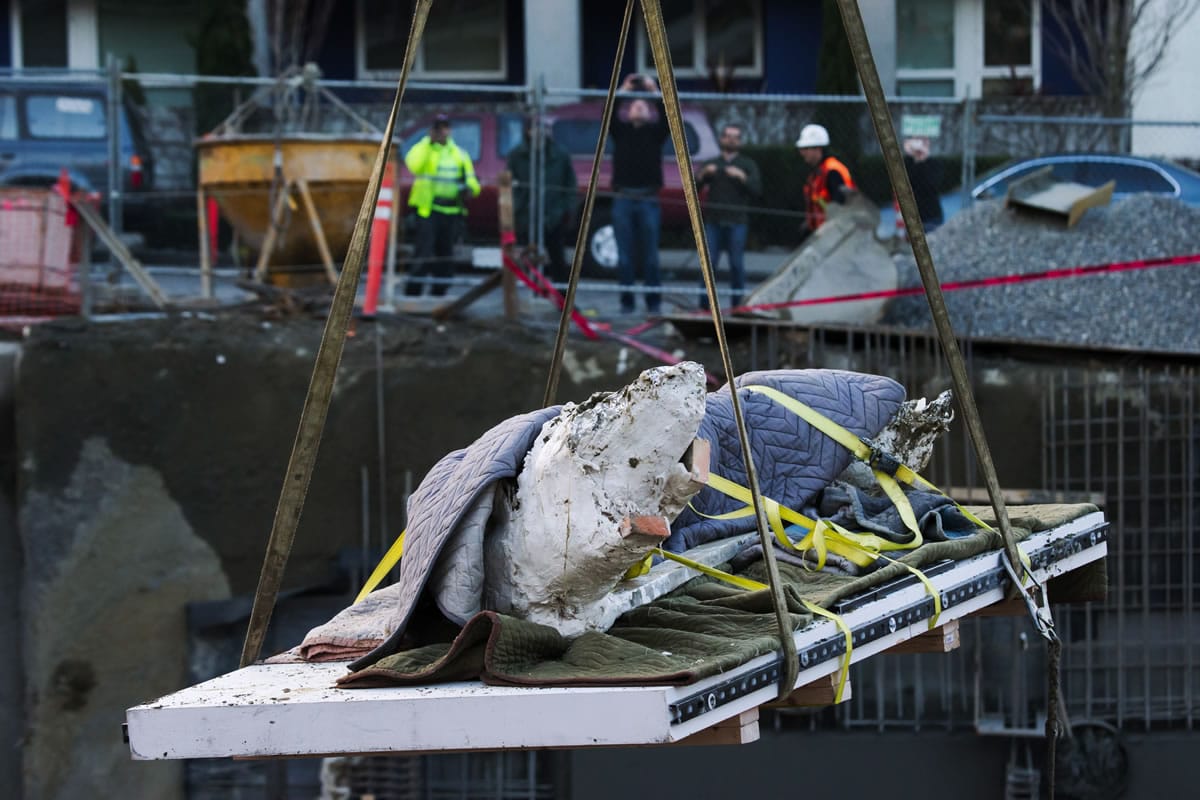SEATTLE — A fossilized mammoth tusk discovered in a Seattle construction site was retrieved Friday evening from a 30-foot-deep pit to the sound of cheers and clicking from people taking pictures.
Scientists and construction crews used a crane to retrieve and hoist the tusk, which was placed on a pallet, encased in plaster and covered in blankets, to a waiting flat-bed truck. The tusk headed to its new home a few miles away at the Burke Museum of Natural History and Culture on the University of Washington’s Seattle campus, where it will be preserved, studied and eventually put on display.
The tusk, believed to be of a Columbian mammoth, was measured at 8.5-feet long after it was fully exposed overnight. It’s between 20,000 and 60,000 years old and with the plaster encasing could weigh up to 500 pounds, said Christian Sidor, a paleontologist from the Burke Museum.
The tusk is water-logged. Scientists say properly restoring and preserving it could take at least a year.
Construction workers found the tusk Tuesday about 30 feet below street level, thinking at first that it might be a pipe or a root. The company building a 118-unit apartment complex at the site has nearly stopped construction to accommodate the scientists.
No more fossils were found during the overnight dig, the museum said Friday.
“Generally tusks like these are the last thing left” after animals and time remove the bones and the rest of the creature, Sidor said.
The tusk’s fate was entirely up to the landowner, who decided to donate it to the Burke Museum. The costs of the delay aren’t known yet, said Scott Koppelman of AMLI Residential, which also owns apartment complexes to the south and west of the construction site. The benefits to the community “outweigh the costs,” he said Thursday.
Mammoths and mastodons were ancient elephant relatives that roamed North American lands that were not covered in ice. Both became extinct as glaciers retreated at the end of the Ice Age. Columbian mammoths grew to 12 feet at the shoulder, or about the size of today’s Asian elephants, the museum said.
Fossilized mammoth remains have been found numerous times in the Seattle area and in the state, so much so that the Columbian mammoth is the state’s official fossil. Still, most of the museum’s collection is fragments. The tusk found this week would be one of the largest and most intact specimens found.
Children at a daycare next door and adults all cheered as the pallet hung over the construction site.
At the day care, there was a hand-made sign that said, “Woolly U B my Valentine?”



